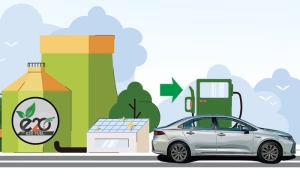GS 3 – ENVIRONMENT

Context:
India has been aggressively promoting ethanol blending in petrol (E20) to achieve energy independence, reduce import dependence, and support farmers’ income. However, the initiative faces environmental, consumer, and trade-related concerns.
Key Highlights
- Ethanol Blending Achievement:
- India achieved 20% ethanol blending (E20) in petrol by 2025, ahead of schedule.
- Sugarcane-based ethanol supply increased from 40 crore litres in FY14 to nearly 670 crore litres in FY24.
- Economic Impact:
- Saved ₹1.40 lakh crore in foreign exchange since 2014-15 by reducing crude oil imports.
- IOC and BPCL reported a 255% rise in dividend payouts since 2022-23, yet petrol prices only saw a 2% decrease for consumers.
- Consumer Concerns:
- Two-thirds of petrol vehicle owners oppose E20, citing reduced mileage and higher maintenance costs.
- Only 7.6% of vehicle sales in 2024 were electric, falling short of the 30% target by 2030.
Detailed Insights
- Government Initiatives:
- Incentivized sugarcane industry via Fair and Remunerative Pricing (FRP) for farmers.
- Promotes E20 as a means to reduce emissions and increase farmer income.
- Environmental Concerns:
- Sugarcane cultivation is water-intensive, causing groundwater extraction in water-stressed states like Maharashtra.
- Potential land degradation due to monoculture expansion.
- Trade & Supply Chain Implications:
- Diversion of rice and corn for ethanol production led to increased corn imports, impacting agricultural trade.
- Dependence on Rare Earth Elements (REEs), primarily from China, affects EV production, highlighting supply chain vulnerabilities.
- Future Outlook:
- The government has not yet decided on ethanol blending beyond 20%.




